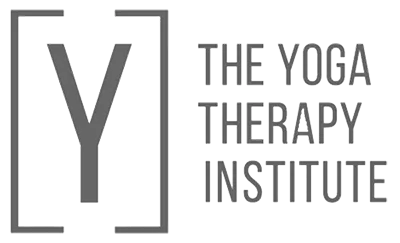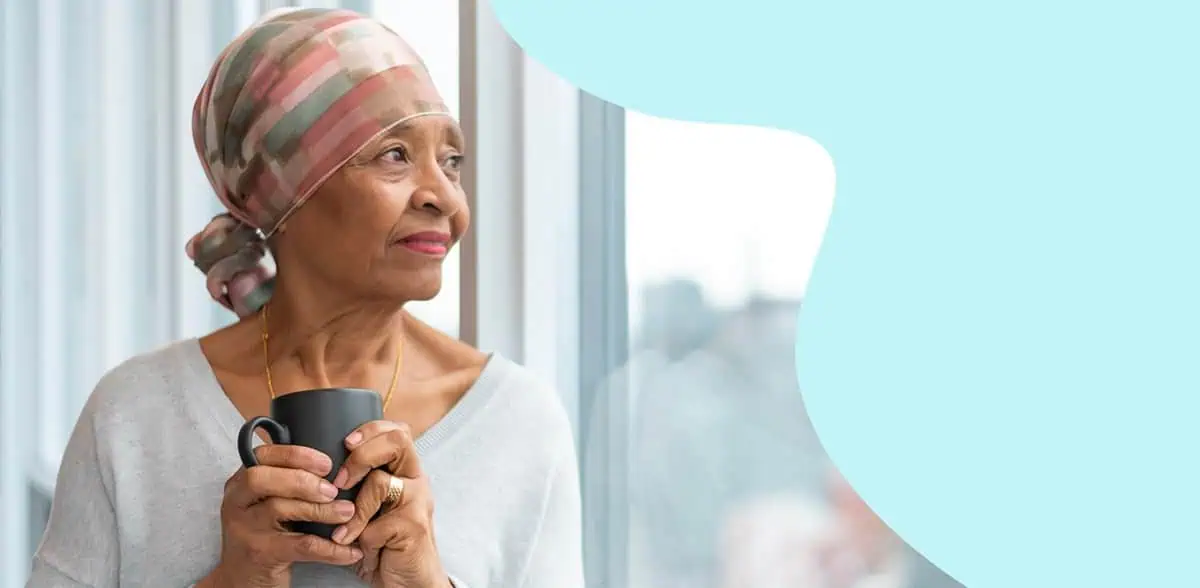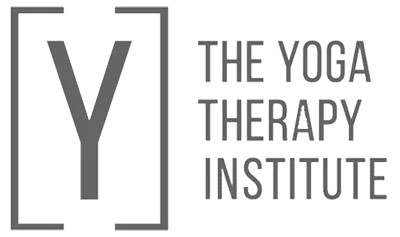Dr Nina Fuller-Shavel, medical doctor, scientist and yoga therapy student shares her perspective on what it means to provide transformational patient and community care and how yoga therapy can play a vital role.

Dr Nina Fuller-Shavel is an award-winning Oxbridge-trained medical doctor, scientist and educator with over a decade’s experience in integrative health and in-depth additional training in nutrition, integrative medicine, yoga, mindfulness and other therapeutic approaches. She is also currently one of the Yoga Therapy Institute’s students, studying towards her IAYT accredited 850-hour diploma. We thought it would be of immense value to share Dr Nina’s unique insight into how Yoga Therapy can best form part of a multi-disciplinary approach to health and wellbeing.
A functional mindset from the outset…
Dr Nina began her career within the field of the natural sciences, including research and education, before qualifying as a medical doctor with her third degree. This meant that she went into medicine with a much more flexible and broad-based mindset than many of her fellow students and whilst this led to some frustration and “interesting” experiences, it crystallised Dr Nina’s desire to create a more functional and integrative medical practice.
Whilst working as an NHS doctor, Nina saw the excellence of allopathic medical interventions in acute, crisis situations, but that chronic, complex problems were being addressed with a “sticky plaster” approach, without examining the root causes or finding solutions. The propensity of medically trained practitioners to ask “What”, rather than “Why”, limits healthcare and the range of tools that could be applied to promote the best possible outcomes for health and wellbeing.
Nina’s own experience with breast cancer treatment, reinforced her belief in pursuing a less conventional bio-medical approach and inspired her to establish her own private integrative medical practice.
“I wanted to practise medicine the way I think, ethically, as an individual who loves her patients, I can provide my patients with the best care possible. I needed to innovate from the outside, in, to deliver the kind of care that I’d want to receive. Proper, personalised, broad-based care, using the best and biggest tool kit.”
Why is an integrative approach so important in improving health care?
There is plenty of evidence that integrative medicine approaches work well, particularly for chronic and complex conditions. So many studies have been done across the world but this information doesn’t get disseminated, sitting in scientific journals, only to be read by those specifically interested in a topic and actively looking for the information.
The medical system often pays lip service to patient-centred care and we really do need to find out what people require. Using a multi-disciplinary team can help to provide this whole person approach to disease. This is where Yoga Therapy has a massive role to play. The foundation of good health rests on taking care of the basics – nutrition, movement, mental and emotional wellbeing and sleep and this is where the integration of complementary modalities is key.
How do we communicate the efficacy and value of Yoga Therapy to the medical fraternity?
A lot of work needs to be done in terms of educating medical practitioners about yoga therapy and what it does. Firstly, we need to create an understanding that one size does not fit all – people need an appropriate level of intervention and those with chronic health conditions require a more specific and appropriate therapeutic approach.
We need to highlight the adaptability and tailored nature of yoga therapy as a suitable intervention in certain instances. Yoga Therapy can be very effective for meeting the person where they are at and empowering them to take control of their health through self-awareness, better management of their symptoms and engaging with their own wellbeing journey.
Yoga therapists need to communicate clearly with a careful use of language, using the correct terminology when speaking to healthcare professionals and explaining how yoga therapy can deliver benefits, in a clear, concise way.
It is important to emphasise that yoga therapy is an effective way of working with chronic health issues, intensely personalised, adapted according to individual assessments, has a good clinical history and puts safety first. Doctors want to know that their patients will receive safe care, particularly as they may have negative perceptions of general yoga practices and seen the effects of extreme or unsuitable yoga practices in other patients. Highlighting how yoga therapy is different to general yoga classes is crucial in getting this message across.

Is accreditation important for yoga therapists?
Dr Nina Fuller-Shavel feels that accreditation and regulation are very important. “In healthcare, some sort of regulation and accreditation is expected.” Doctors want to know that they are referring to someone who abides by a code of ethics, is guided by a code of practice and receives professional mentorship and support.
It is also important for the yoga therapy profession to be able to hold themselves to high standards and to be part of a regulatory body that ensures safe and effective practices. This will give both the medical profession and the members of the public confidence in our ability to deliver valuable and effective care as part of a multi-disciplinary healthcare team.
Being accredited, with a professional body, also facilitates a sense of community, supports the building and exchange of research as well as developing best practice guidelines.
Having a system of mentorship and a credible source of support and knowledge is helpful to yoga therapists, helping them to provide the best care and to know when and where to refer in the best interests of their clients.
What skills are important for a yoga therapist to be effective, as part of a multi-disciplinary team?
In Dr Nina’s integrative practice, patients have access to an extensive multi-disciplinary team to ensure a collaborative approach, aiming to provide the best personalised support for patients.
What helps to make this collaborative approach so effective are the following:
- Good communication skills
- ‘Looping back’ – providing regular feedback to the medical practitioner about the progress of a patient, what the patient has been doing, what the benefits have been and what still needs to happen.
- Being aware of red flags and contraindications
- Being aware of referral pathways and when to refer
How can Yoga therapy support healing?
Yoga therapy allows people to practice Interoception. By understanding what they need and through the process of co-regulation, it is then possible to find the appropriate way for them to move or breathe or simply, and most crucially, to be in a safe space. Sometimes, this is the first time someone is able to tell their story, is really listened to or their pain and suffering acknowledged. A yoga therapist empowers and holds a safe space. Being there for a client is often enough to begin the healing process.
Yoga therapy supports healing specifically through:
- Non-judgmental listening
- Holding safe spaces
- Co-regulation within a therapeutic relationship
- Empowering through offering choice and supporting self-reflection and learning. This allows people to become active participants in their own health – to learn what works for them, what they can do to keep themselves well and how to self-correct, when faced with challenges that affect health. Yoga therapy works on this kind of mindset and behaviour.
- Encouraging healthier daily habits. This provides a framework on which clients can build additional layers of self-enquiry and requires less willpower to be consistent and build on a structure that becomes deep-rooted and easier to maintain.
- Applying appropriate techniques in a personalised and sensitive way, within a therapeutic relationship, supports healing by ensuring that the techniques and tools land on fertile soil and have the best chance of success.
How can we continue to raise awareness and communicate the health benefits of yoga therapy to the wider world?
In many countries, there is still a lot of work to be done to increase awareness of the health benefits of yoga therapy.
As an experienced medical practitioner, Dr Nina Fuller-Shavel offered the following thoughts on how this could best be achieved:
- Advocate for the building of multidisciplinary teams, which include yoga therapists and other allied health professionals.
- Do case studies and tell patient stories to show how yoga therapy has benefitted people and the path their practices have taken. In this way, people can see themselves in these case studies and how yoga therapy can help them, too.
- Present case studies in such a way that they show how yoga therapy practices can support disorders or health problems and how they improved the clients’ quality of life.
- Bolster ‘yoga as therapy’ with clinical audit and research and share information to increase the credibility and awareness of this type of therapeutic intervention.
- Yoga therapy is a practical and personalised way of delivering therapy and that’s how we need to present it. Talking through someone’s journey is a powerful way of getting that message out.
- Report patient outcomes. Ask for and communicate feedback from the client. How did they experience yoga therapy and what were the benefits? This could be done using a simple rating scale as part of the assessment and then repeated at intervals to determine progress. It can help answer questions like: Has there been a difference and what are these differences? Has the client been able to function better or manage their condition in such a way as to improve their quality of life? It is important to know if you have made a difference or whether you are getting stuck somewhere and need to find a more effective way. It facilitates ongoing learning and allows you to reflect on gaps in your knowledge. It can also be motivating for the client to see how they have progressed and increases the amount of evidence-based information available to strengthen yoga therapy as a profession and in the eyes of the medical profession.
- As a yoga therapy community, yoga therapists can support each other and their profession, by building and disseminating this real-world evidence. This will help get the message across and capture peoples’ attention. If someone says this benefitted me – others will relate and be interested. Word of mouth is a powerful way of promoting yoga therapy and sharing information builds relationships.
- Approach integrative and functional medicine practitioners and the broader natural healthcare world in your area. Contact them and explain what you do, who you work with, who you are and how they can referpatients to you. Doctors need to have some experience or understanding of yoga therapy in order to refer patients. Talk them through the evidence, the benefits and make use of testimonials. This will also filter down to the public, who need to understand the difference between yoga and yoga therapy.
What is your vision, as an integrative medical practitioner, for the future of healthcare?
We need to move away from practising sick-care, which is what the current medical model is based on, towards healthcare that empowers the individual. To guide people with complex conditions to take action for themselves by supporting and resourcing them to manage their own health.
To teach people how to take care of their nervous systems in a world that is loud and unceasingly clamours for our attention and to which we are not naturally adapted. We need to increase our capacity and willingness to rest and restore.
To be a great referrer and to support patients with a multi-disciplinary health care team, which includes yoga therapy. Medicine does not have all the tools and I would love to see yoga therapy used as a preventative tool and to support people with complex, chronic conditions.
Yoga therapy knows far more about the mind-body aspect, whilst medics have the bio-medical knowledge and mindset. In working together, there is an amazing synergy and the power to transform someone’s wellbeing!









